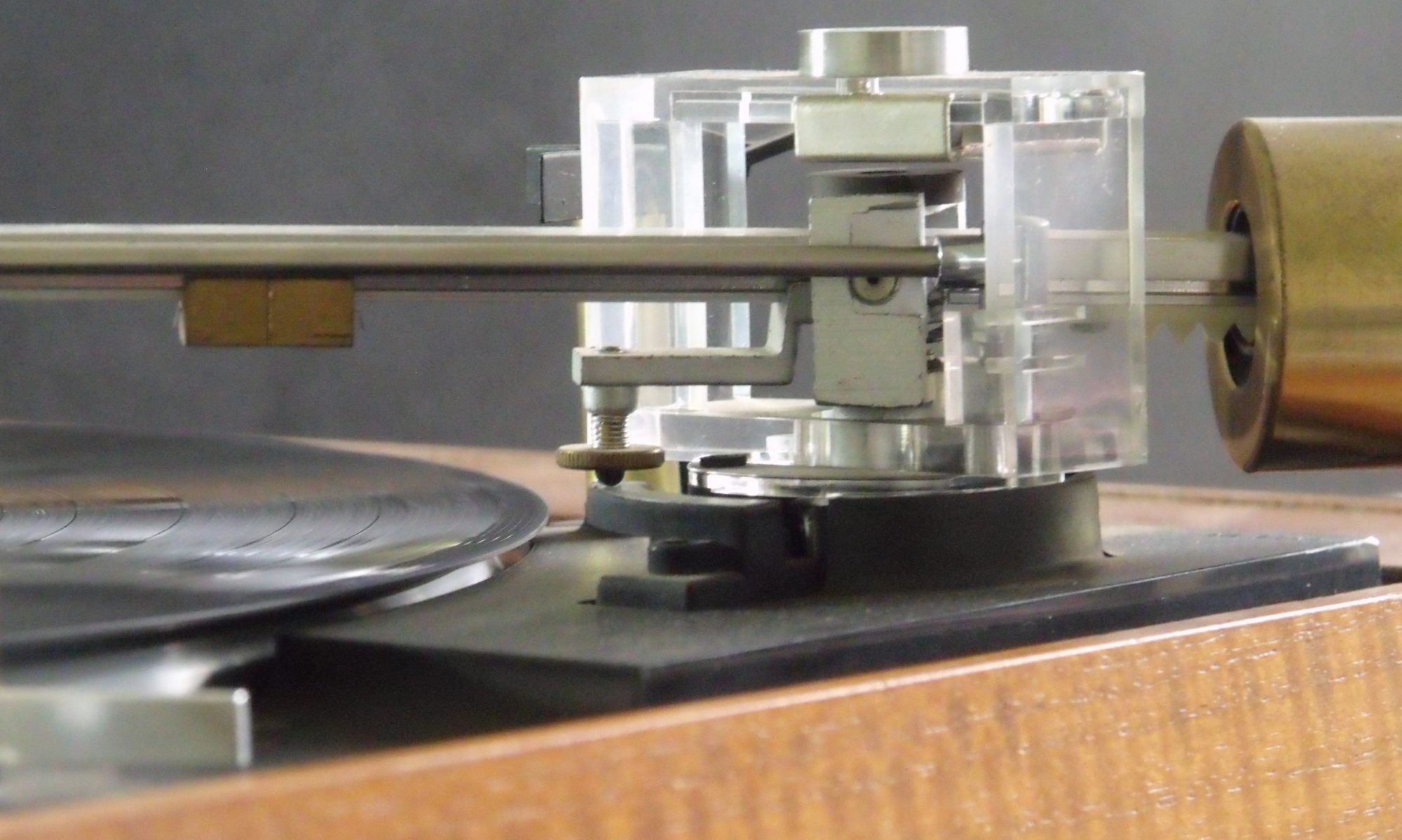My system sounds great, but it’s lacking a little something aesthetically.
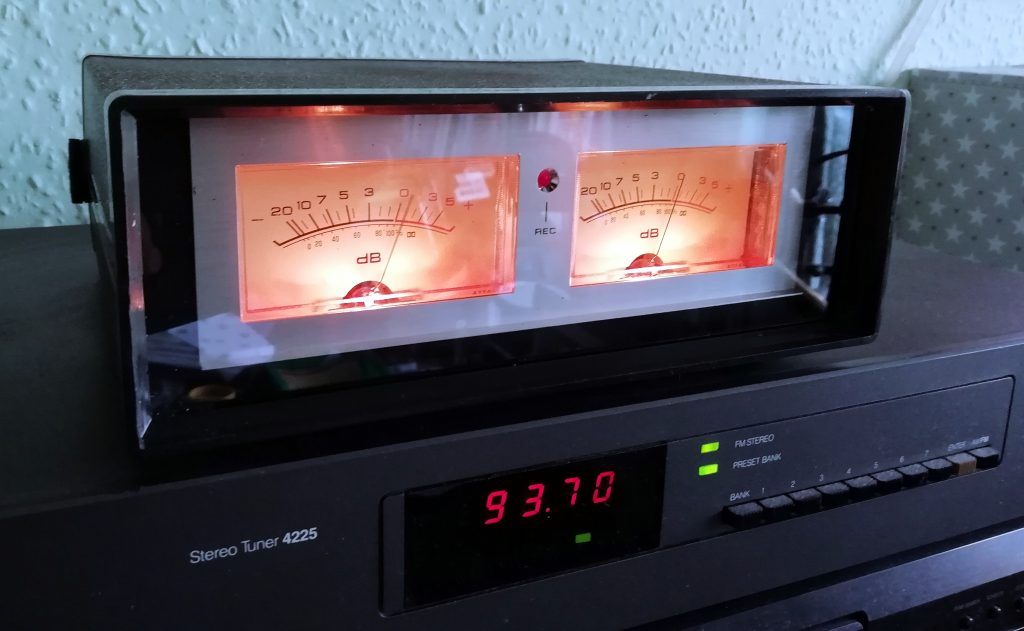
A cassette deck, which was otherwise beyond repair, had a lovely pair of VU meters. Maybe I can do something with those?
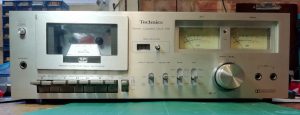
The donor was a Technics 616 which was a bit tatty and had a horrible electronic problem that I had grown tired of trying to trace.
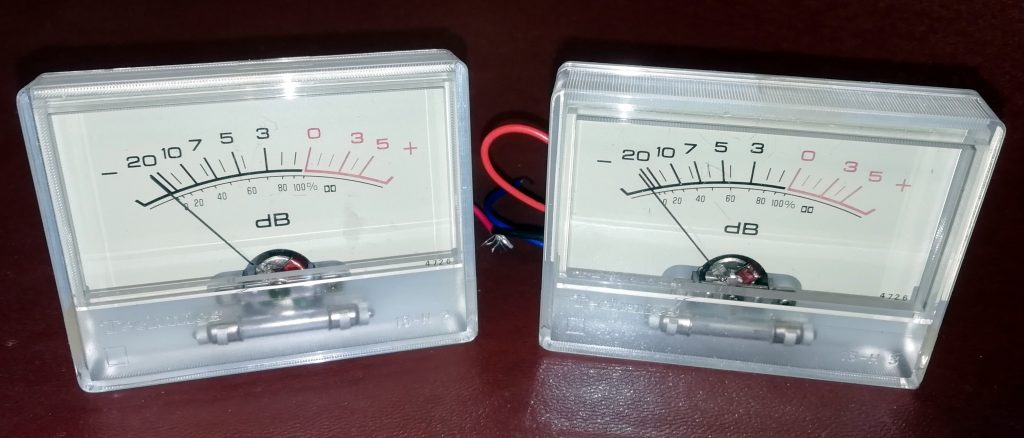
I stripped it for parts, salvaging the mechanism, motor and this marvelous pair of VU meters.
The hardest thing to get right was the enclosure. I tried various plastic project cases but the right size and proportions were elusive. It was also difficult to accurately and neatly cut the required rectangular holes for the meters.
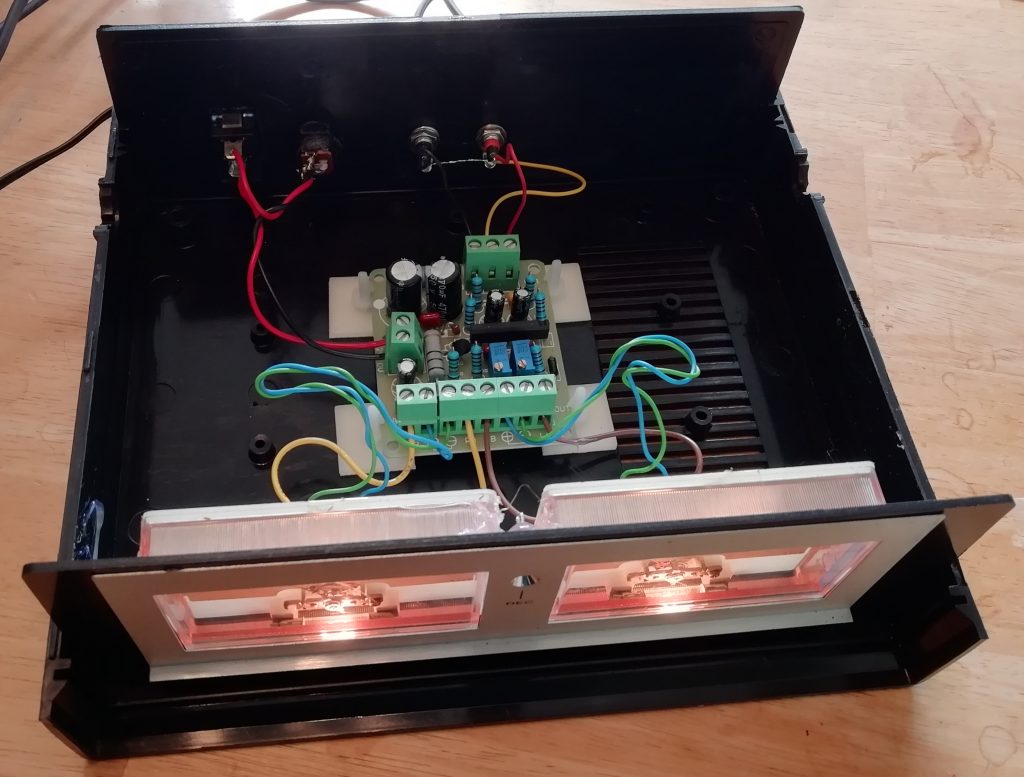
The solution eventually used is a plastic instrument case (£12 eBay). I used the original Technics tape deck panel as a bezel, so I could get away with dodgy cutting out.
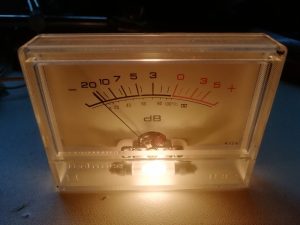
The bare light bulb was a bit harsh. I solved this with copper foil. This stuff is sold for shielding the electrics inside the wooden cavities of electric guitars.
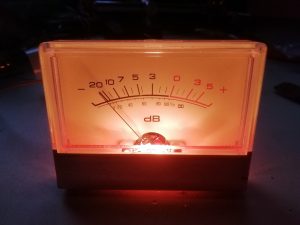
Here we see it stops the light and has the added bonus of reflecting back with a nice golden hue for a great vintage look.
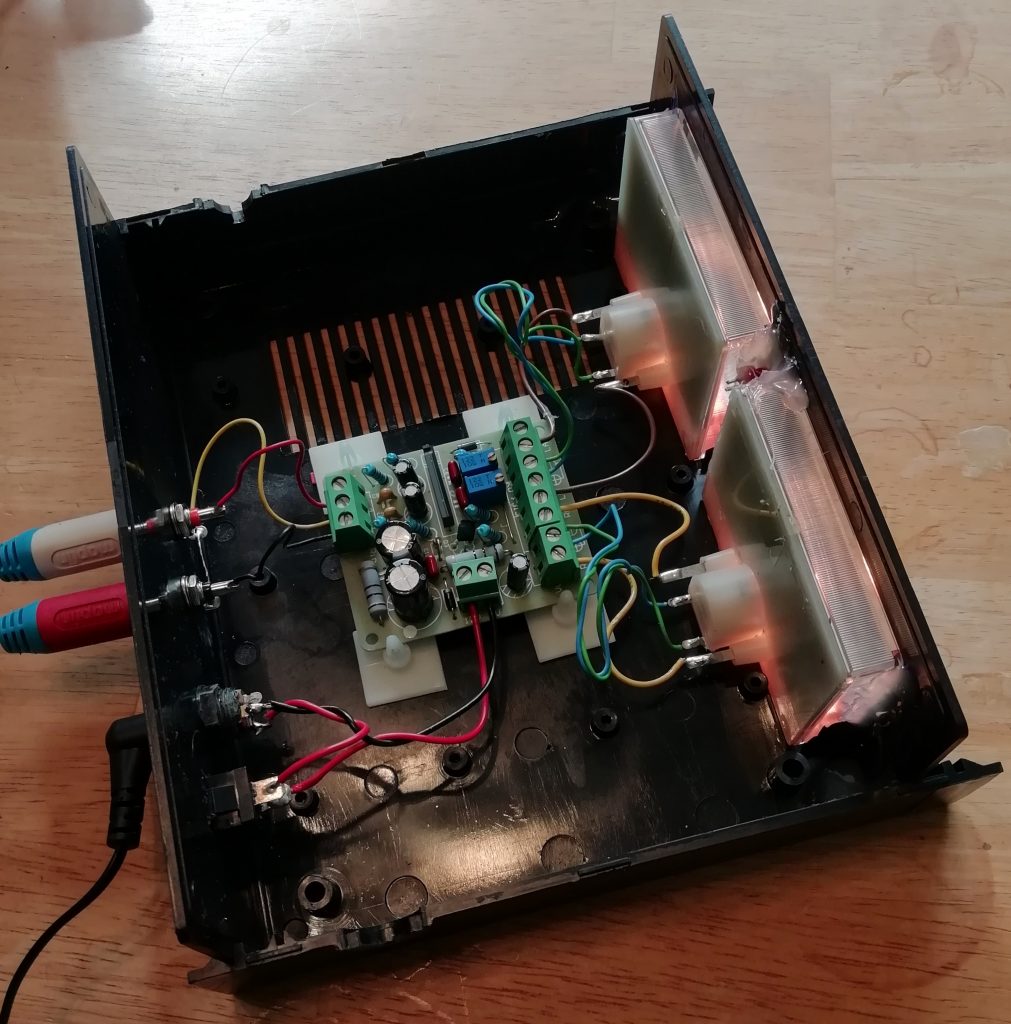
Drive electronics are courtesy of a module, £9 off eBay. A a pair of RCA phono sockets are provided to facilitate easy insertion in the signal path, usually in the amplifier tape loop. Power is from a 12 volt plug top power supply.
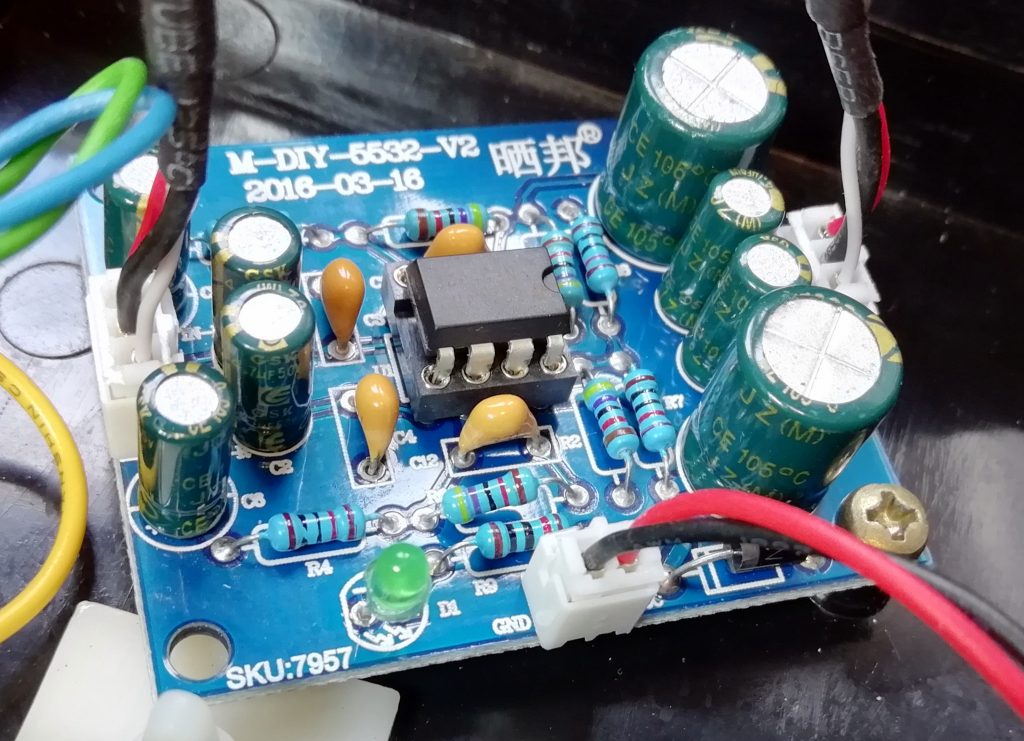
In use I found that it loaded the output of the amp enough for it to be audible. I fixed this by adding a buffer module to the input and re calibrating the meters. it only cost £7 and saved me the hassle of trying to reverse engineer the VU meter module to figure out if I could modify it to fix the issue. Chose your battles.
Much of the assembly is held together with hot glue from a gun. The original front panel from the instrument case is cut out to accept the meters and mounted a little way back from the from the front of the box. Calibration was done using a test record to provide suitable sine waves and adjusting the trim pots on the circuit board.
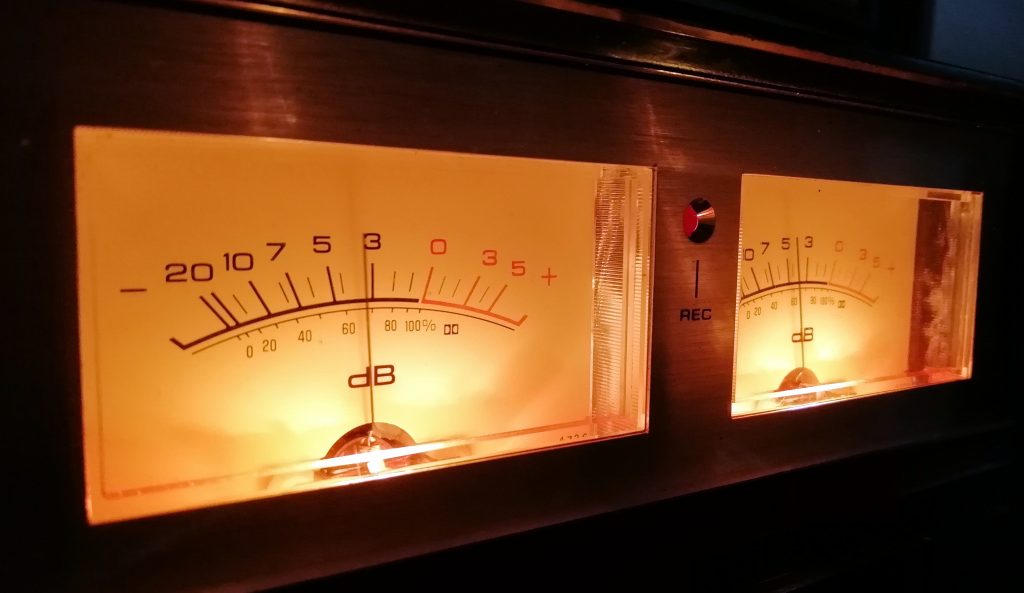
A perspex window is fitted in the original front panel slot to provide a smart finish and protect the meters. This arrangement looks particularly good in the dark.
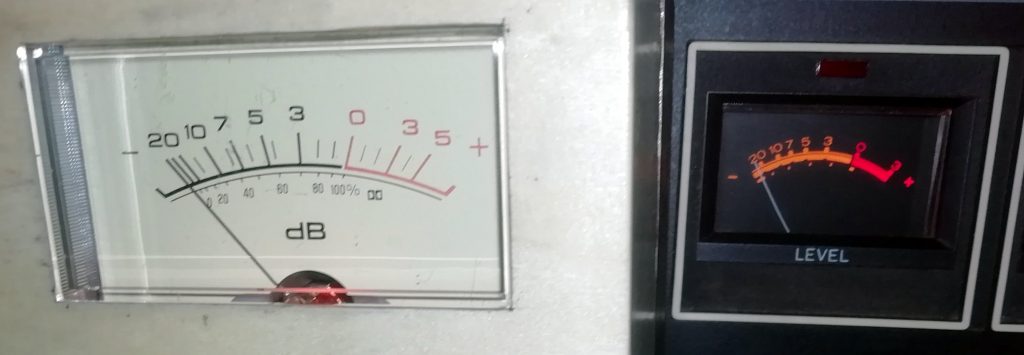
These meters are big. 3 inches in diameter. Even my huge Sony tc-377 open reel deck only has 2 inch meters. The unit sits on top of my system and looks the business.
This is a revised version of this article.
